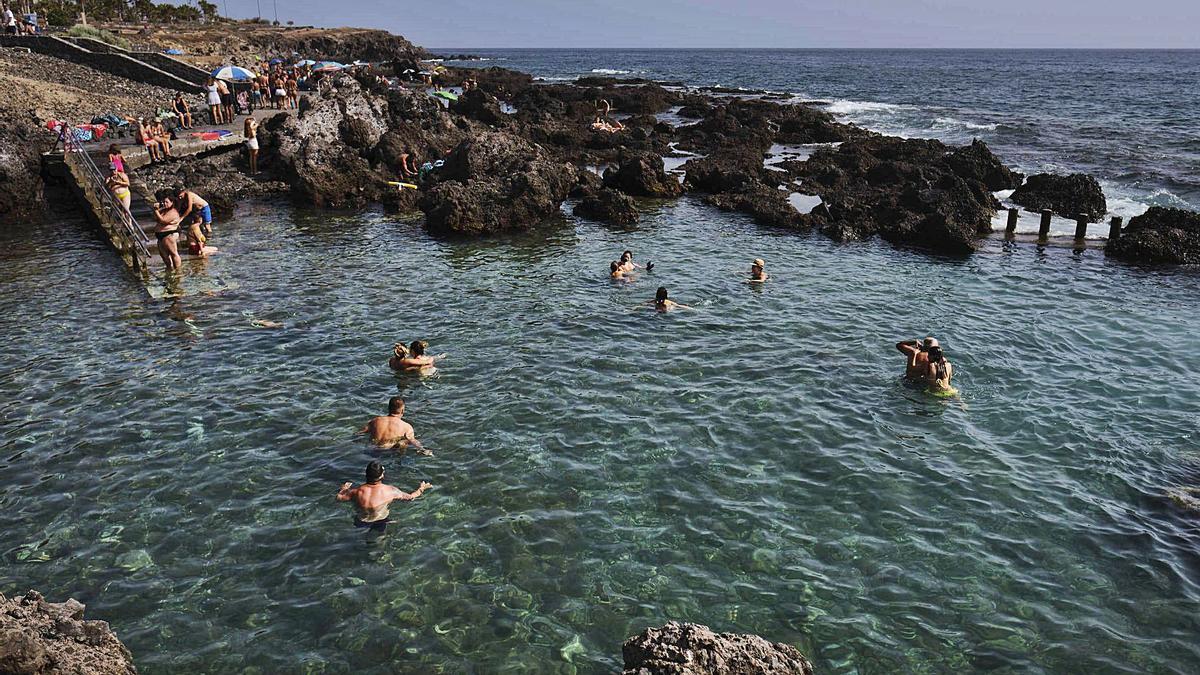
In the Canary Islands there are 492 pools cataloged, although only 117 -61 in Tenerife- have the adjective “tourist” in the recent Regional Government’s Tidal Pool Master Plan. Marine biologist Pablo Martín leads the initiative to protect these ‘nurseries’ of biodiversity from mass tourism.
“The puddles do not touch.” It is the motto of an initiative launched through the change.org platform. By mid-afternoon yesterday, it had already received the support of more than 5,400 firms. It was launched on August 14 by Tenerife marine biologist Pablo Martín. Your intention is get adhesions for «maximum protection» of this peculiar environment, which qualifies as nurseries of biodiversity. He does it after the announcement –which this newspaper echoed at the beginning of the month with an extensive report– of the Canary Islands Government to develop a Tide Puddles Plan. The document classifies 117 –61 in Tenerife– of the 492 puddles registered in the Canary Islands as “of tourist interest”.
Irreparable damage.
In his argument on change.org, Pablo Martín corroborates that “The puddles of the Canary Islands are authentic nurseries for many marine and terrestrial species”. He considers that “converting these areas free of mass tourism and cement into tourist areas would irreparably damage these points of the Canarian coast, which are a refuge for the island’s biodiversity.” Martín emphasizes that «this initiative was born out of the concern of marine biology in the Canary Islands and of nature lovers in the face of the announced project to act in the 117 pools that they consider to be of tourist interest, on which to carry out an individual action to promote its value as a natural attraction ”. Martín values: “We believe the amount of puddles that they want to touristic is excessive in order to end the only areas free of mass tourism and all the pollution that this entails.” The biologist also adds that “we demand that environmental impact reports be made for each area of puddles that they intend to modify and that scientific studies published on the importance of the Canarian intertidal zone be taken into account.” And he concludes: “This is not the way to conserve and protect these places of great ecological importance.”
Widespread support.
It is enough to review some testimonies with which hundreds of canaries, the majority from Tenerife justify their support for Martín’s initiative. Some examples: “Let’s leave our natural environment intact. We have already transformed the Islands too much for tourism »; “We need to preserve what little remains virgin on our coasts” or “it is good to load up all the ecosystems of the Islands; now, also the puddles ». More arguments: “No more tourist exploitation of the Canarian coastline”; “Total protection of the ecosystems that remain in the Canary Islands”; “You cannot modify what is by nature a marvel”; They are destroying everything. Paradigm shift now ”or“ yes to life, no to cement in the Canary Islands ”.
The paradigm, from science –but, also, with an eminently popular and even ethnographic sense–, goes through “respecting the puddles, those natural pools of volcanic lava, because they are inhabited by a fragile and extraordinary natural ecosystem, a biodiversity it depends on that environment. Conserve our landscape and control mass tourism.
Puddle paradise.
Tenerife is, without a doubt, the Canarian paradise of puddles. There are them all along the coast, from north to south and from east to west. A sign of identity as places where many generations have learned to swim or come into contact with the sea, but also a space of certain freedom in contact with the marine environment. For not being overcrowded and for being in a natural environment of particular beauty and virginity marked by volcanic geomorphology. Very popular with the people of the country, but also desired by the visitor who runs away from the classic offer of sun and beach.
Universe among rocks.
From the unusual blue dragon, tiny sea slug with incredible shapes and colors, to the colonies of carpet anemones, puddle corals, algae, urchins, sponges, starfish, pot-bellied fish … In the puddles of the Canary Islands there is much more life than you imagine. A total of 117 have just been declared of regional tourist interest by the Canarian Government, but there are many others and all hide a universe of biodiversity. With intertidal habitats as characteristic ecosystems of the coasts of the Archipelago.
















